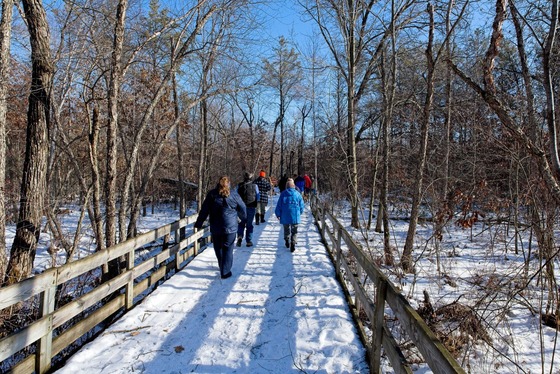Help Protect Oak Trees From Oak Wilt
The DNR Recommends Not Pruning Until After July
MADISON, Wis. – April brings a high risk for the often-fatal oak wilt disease across the state, and as a result, the Wisconsin Department of Natural Resources (DNR) recommends not pruning or cutting oak trees from April through July. What you can’t see can kill a tree.
Oak wilt is widespread in southern Wisconsin, but it is still a new and uncommon disease in much of northern Wisconsin. As spring draws property owners outdoors to start seasonal yard maintenance and cleanup projects, when it comes to the health of oaks trees, keeping those chainsaws and trimming tools a safe distance will go a long way to ensure that your trees stay healthy for many more spring seasons to come.
Tree paint or wound dressing is not normally recommended on pruned or wounded surfaces, but for damaged oaks a light application of these products immediately, if possible within 15 minutes, may be the only defense against oak wilt infection from April through July. Wounds are not susceptible to oak wilt after 72 hours.
It should be noted that although overland infection can occur in mid-July, it is not common. To be very cautious, avoid wounding oaks from April through October 1.
If an oak is wounded during this period, immediately and thoroughly apply pruning sealer or tree paint over the wound. Torn branches or roots should be cut clean and the cut surface painted. For additional protection, cover treated roots with soil. The DNR does not recommend tree paint or wound dressing on pruned or wounded surfaces.
Oak wilt spreads over land, by sap-feeding beetles that carry the fungal spores from infected oaks to fresh wounds on healthy oaks; and, underground, from infected oaks to nearby healthy oaks through grafted, or interconnected, root systems.
“Sap-feeding beetles, like most insects, have an incredible sense of smell, which draws them to open wound surfaces to feed on sugary sap in as little as 15 minutes after a tree is wounded,” said Paul Cigan, DNR Forest Health Specialist. “This is how most new oak wilt infections start.”
Red, black and pin oaks are highly susceptible to oak wilt. Once infected, they can die within a few weeks. White and bur oaks are much less susceptible. If infected, they can take months or years to die, or they may even recover.
“Deciduous (shedding) trees that lose their leaves in the fall are just starting to grow new buds and leaves, so the trees’ food reserves are low,” said Don Kissinger, DNR Urban Forester. “In general, the best time to prune is in winter when trees are dormant.”
As of January 31, the DNR has received reports of oak wilt in all Wisconsin counties except Ashland, Iron, Forest, Taylor, Door, Kewaunee, Calumet and Manitowoc counties. Several of these counties contain the highest abundance of healthy and productive oak forests in the state. Taking recommended precautions will help keep them that way for years to come. Check with your municipality to find out if they have their own oak wilt ordinances that you should follow as well.
Oak wilt and other diseases move easily on or in firewood logs year-round, so keeping firewood local or purchasing Wisconsin-certified firewood, is another critical component of protecting trees and maintaining healthy forests.
More information is available online on the DNR’s oak wilt webpage and the DNR’s firewood webpage. Additional information about proper pruning techniques is available from community foresters in the DNR’s Proper Pruning Techniques publication.
NOTE: This press release was submitted to Urban Milwaukee and was not written by an Urban Milwaukee writer. While it is believed to be reliable, Urban Milwaukee does not guarantee its accuracy or completeness.
Mentioned in This Press Release
Recent Press Releases by Wisconsin Department of Natural Resources
DNR Confirms CWD in Wild Deer in La Crosse County
Dec 22nd, 2025 by Wisconsin Department of Natural ResourcesBaiting And Feeding Ban Extended























